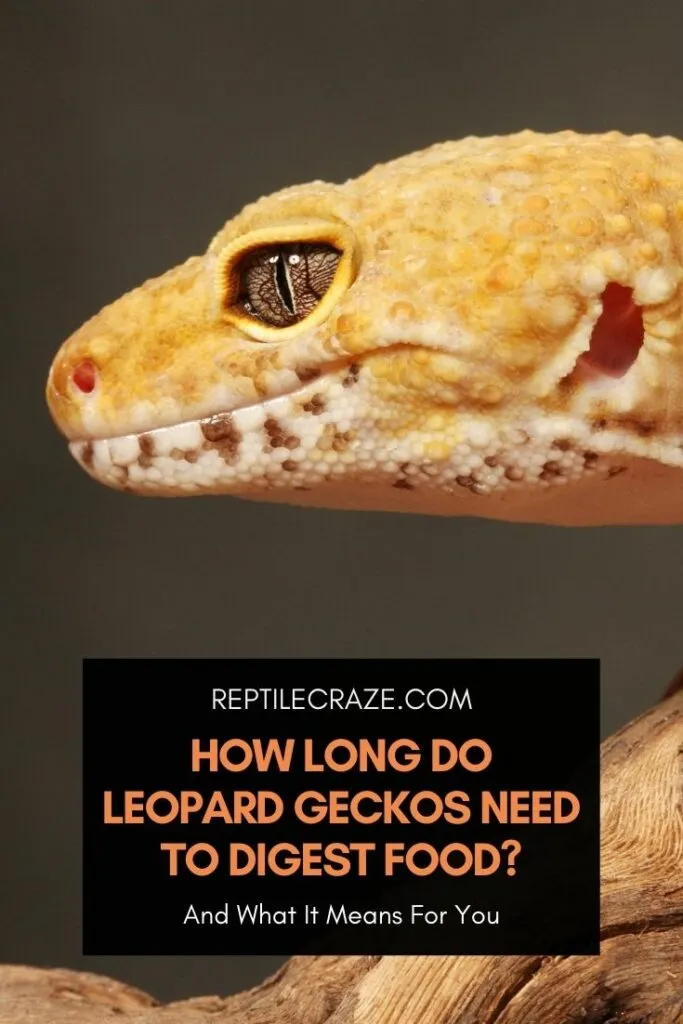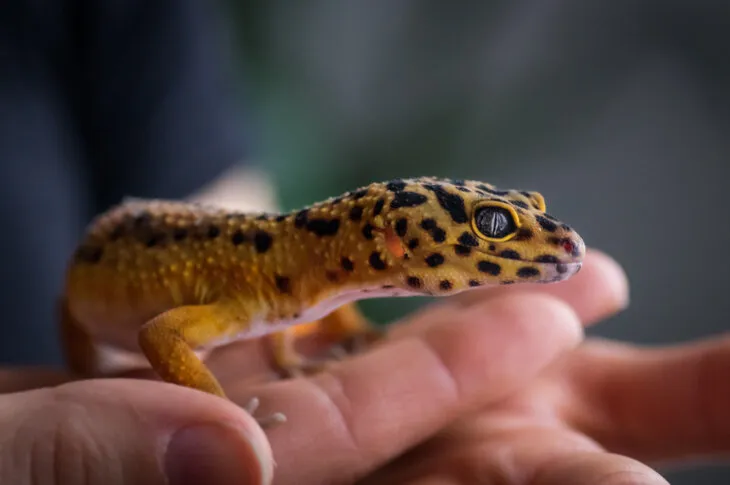
Knowing how long is normal for your Leopard Gecko (Eublepharis macularius) to take to digest
Digestion time in Leopard Geckos varies significantly, depending on the temperature, the
Let’s discover a little more about what could affect the digestion time of your Leopard Gecko.
Table of Contents
Digestion Time Varies A Lot Between Individuals
Research presented to the Association of Reptilian and Amphibian Veterinarians showed that digestion time varies a lot. This is true even among Leopard Geckos who have the same husbandry conditions and eat the same
Mealworms took between 49 hours and 219 hours to pass through the gastrointestinal passage. Pinkies took 51 hours to 216 hours to pass through the gastrointestinal passage.
This is a huge amount of variation between healthy adult Leopard Geckos with similar husbandry conditions!
After being swallowed, prey animals often remained for up to 15 minutes in the esophagus. The esophagus is in the throat and leads to the stomach.
Pinkies then remained in the stomach for as long as 49 hours. Mealworms remained in the stomach for as long as 52 hours.
The stomach contains hydrochloric acid, and pepsin. Hydrochloric acid breaks down
Overall, the digestion time of Leopard Geckos was shown to be much slower than other lizard species. Also, digestion time was shown to vary a lot between individuals, different
1 to 2 Days Is The Normal Time Between Eating and Pooping
Leopard Gecko keepers generally agree that 1 to 2 days following feeding is the usual amount of time before seeing a bowel movement from your pet. That’s 24 to 48 hours.
Remember though, that the research showed that it could take up to 219 hours to digest
Because the material that your Leopard Gecko poops out in a bowel movement may not be the same material that he ate the day before.
The scientists monitored the journey of 1 meal all the way through the digestive tract of the Leopard Gecko. They did this by marking it with a pigment that is visible under ultrasound. But, this doesn’t mean that the Leopard Gecko did not have other bowel movements in between.

Monitor Normal Digestion Time For Your Leopard Gecko
The most important thing when it comes to your Leopard Gecko’s digestion time is finding out what is normal for them as an individual.
Don’t be afraid to monitor for bowel movements, and take notes! It’s all part of good Leopard Gecko husbandry.
If your Leopard Gecko usually has a bowel movement 2 days after a meal, you will know that something is wrong if he doesn’t poop for 5 days.
Temperature Affects Digestion Time
If the temperature is too cool, your Leopard Gecko will not have the energy to facilitate digestion.
For Leopard Geckos, floor temperature is important. They rest their belly on the warm substrate to aid with digestion. 90 degrees Fahrenheit is the ideal floor temperature to aid digestion.
A heat lamp can be used to provide heat for Leopard Geckos, but it can also easily cause overheating, drying, and burns if done incorrectly. Read our article on heat lamps to learn how to set up a heat lamp right.
If you are using lamps of any kind, test the temperature both at the floor level and at the highest level your Leopard Gecko reaches. This will ensure that your Leopard Gecko is not exposed to higher temperatures than intended.
A more popular and foolproof way to provide belly heat for Leopard Geckos is to use an under-floor heat mat. This provides warmth exactly where it is needed.
Again, monitor temperatures in the enclosure carefully to prevent drying and burns. Also, ensure that only one area of the floor is warmed to this degree.
The rest of the enclosure should not be more than 84 degrees Fahrenheit, This allows your Leopard Gecko to move away from the heat.
You can find out more about how your Leopard Gecko’s environment affects his digestion in our guide on the best time to feed your Leopard Gecko.
- Eastern Rat Snake: Nature’s Pest Control and Fascinating Reptile - September 20, 2024
- Eastern Racer: The Fast and Agile Snake - September 19, 2024
- The Eastern Indigo Snake: The Majestic, Non-Venomous Hunter of the Southeast - September 18, 2024
